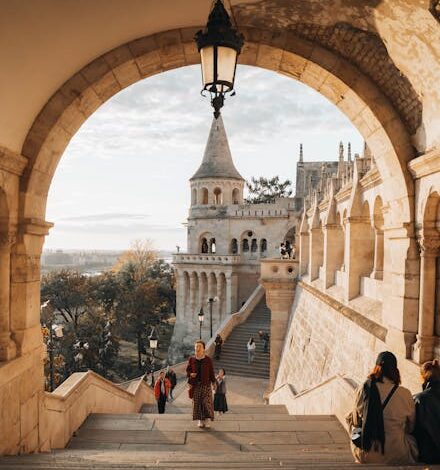A Gateway to Eternity: The Unveiling of Monumental Wonders

Every so often, a moment arrives that transcends mere news and carves itself into the annals of history. For Egypt, and indeed for the entire world, that moment unfolded on Saturday, November 1st, with the official opening of the Grand Egyptian Museum (GEM). Nestled strategically near the ancient Giza Pyramids, this wasn’t just another building opening its doors; it was the culmination of over two decades of dreaming, designing, and painstaking construction. Imagine a project of this scale, designed to house over 100,000 artifacts across 480,000 square meters, all dedicated to celebrating a single, incredible civilization stretching back 7,000 years. It’s an ambitious endeavor that redefines what a museum can be, and the opening ceremony offered a tantalizing glimpse into its unparalleled grandeur. Let’s delve into some of the truly unforgettable moments that marked this historic occasion.
A Gateway to Eternity: The Unveiling of Monumental Wonders
Stepping into the Grand Egyptian Museum, even virtually, felt like traversing a portal through time. From the very outset, it was clear this wasn’t just a place to display relics; it was a carefully curated journey designed to immerse visitors in the majesty of ancient Egypt. The atmosphere was charged with a palpable sense of anticipation, an almost sacred reverence for the treasures it now safeguards. It’s the kind of experience that makes you rethink everything you thought you knew about museums.
The Guardians of the Entrance: Ramses II and Khufu’s Solar Boat
The first impressions truly set the tone. Dominating the grand entrance, as if standing guard over millennia of history, was the colossal, 11-meter granite statue of Ramses II. Its sheer size and intricate detail are enough to take your breath away, instantly connecting you with the power and legacy of one of Egypt’s most iconic pharaohs. Standing beneath it, you can almost feel the whispers of ancient empires. It’s a powerful statement, a declaration that this museum is a place of kings and legends.
And if Ramses II wasn’t enough to humble you, imagine turning to find Khufu’s 4,600-year-old solar boat, meticulously preserved and proudly displayed. This incredible vessel, once intended to carry the pharaoh’s soul through the afterlife, now sits as a testament to ancient Egyptian ingenuity and their profound belief systems. To see it up close, knowing its age and purpose, is to witness a piece of history that feels almost alive. These two monumental artifacts, strategically placed, weren’t just exhibits; they were the welcoming committee to an unparalleled cultural odyssey, flanked by a breathtaking Grand Staircase lined with even more monumental statues, each telling its own silent story.
Melodies of Millennia: A Symphony of Egyptian Heritage
The opening ceremony wasn’t just about static displays; it was a vibrant, living celebration of Egyptian culture, blending ancient traditions with contemporary artistic excellence. The air resonated with powerful performances that spoke volumes about Egypt’s enduring spirit, truly making you feel like you were part of something much larger than yourself. It was a masterclass in how to honor the past while embracing the present.
Voices That Echo Through Time: Sopranos Fatima Said and Ragaa Eldin
Among the most moving moments were the performances by Egyptian Sopranos Fatima Said and Ragaa Eldin. Their powerful voices, soaring through the grand spaces of the museum, were nothing short of enchanting. Composed by the brilliant Egyptian musician Hisham Nazih, the pieces were more than just music; they were a tapestry woven from the threads of ancient and modern Egyptian history. You could hear the echoes of pharaohs and feel the pulse of contemporary Cairo in every note.
The inspiration drawn from Egypt’s ancient civilization was unmistakable, reminiscent of the awe-inspiring musical scores performed during the Royal Mummies Parade. These performances didn’t just entertain; they transported, connecting the audience to the profound emotional and spiritual landscape of ancient Egypt while affirming its place in the modern world. It was a beautiful, almost ethereal experience that truly brought the museum’s purpose to life.
Harmonies of a New Generation: Amira and Mariam Abou Zahra on Violin
Adding another layer of international flair and artistic depth were the performances by international Egyptian musicians, Amira and Mariam Abou Zahra. As the granddaughters of the celebrated artist Abdel Rahman Abou Zahra, these talented violinists showcased a remarkable blend of technical prowess and heartfelt expression. Their music, flowing through the vast halls, symbolized the continuous lineage of Egyptian artistry – a bridge from revered ancestors to a vibrant future. It was a powerful reminder that while the museum celebrates the past, it also nurtures and inspires new generations of talent.
The choice to feature such diverse and talented Egyptian artists underscored a crucial message: the Grand Egyptian Museum is not merely a repository for relics, but a living, breathing testament to a culture that continues to innovate, inspire, and enthrall. The music, in its blending of heritage and contemporary excellence, became a vital part of the museum’s narrative, echoing the very essence of Egypt itself – ancient, enduring, and forever captivating.
A Global Spectacle and a New Chapter for Egypt
The opening of the Grand Egyptian Museum was more than just a domestic event; it was a global spectacle, drawing eyes from across the world. For decades, archaeologists, historians, and tourists alike have eagerly awaited this moment, understanding its immense significance. This facility isn’t just the largest museum dedicated to a single civilization; it’s a bold declaration of Egypt’s commitment to preserving its heritage and sharing it with humanity on an unprecedented scale.
Think about the sheer impact: a dedicated space where over 100,000 artifacts can be properly conserved, studied, and admired. It’s a monumental step forward in cultural preservation and accessibility. For researchers, it’s a dream come true; for tourists, it’s an unrivaled destination that offers a deeper, more immersive journey into one of the world’s most fascinating civilizations. The GEM is poised to become a new benchmark for museums worldwide, setting a standard for immersive storytelling and comprehensive historical presentation. It’s a beacon for cultural tourism, promising to inspire awe and curiosity for generations to come, truly marking a new chapter in Egypt’s enduring story.
The opening of the Grand Egyptian Museum wasn’t just a ceremony; it was a grand overture to a new era for cultural exploration. From the monumental statues greeting visitors at the threshold to the soul-stirring melodies that filled its halls, every moment was imbued with a sense of purpose and a profound respect for Egypt’s unparalleled heritage. This isn’t merely a museum; it’s a living narrative, an interactive textbook, and a vibrant stage for ancient wonders. As the doors officially open to the public on November 4th, inviting the world to experience its magic, the GEM stands not just as a guardian of the past, but as a shining symbol of Egypt’s future, inspiring a renewed appreciation for the enduring power and beauty of human civilization. It’s an experience that promises to stay with you, long after you’ve left its magnificent presence.





